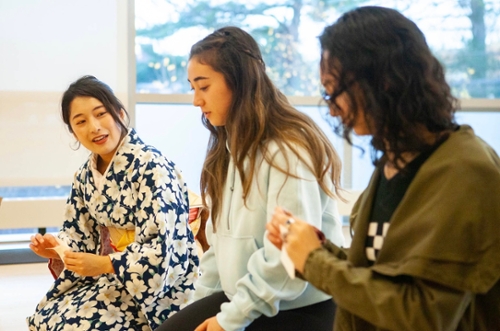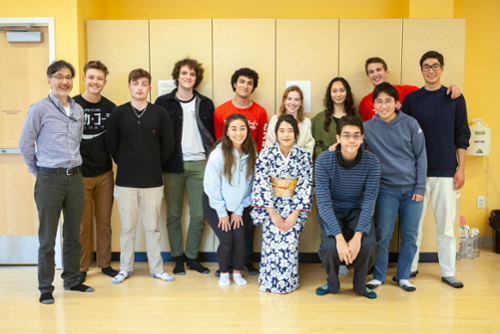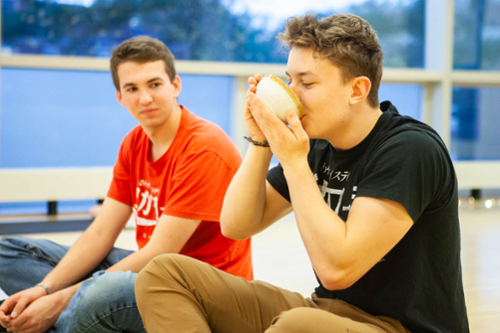The Japanese Tea Ceremony
By Roger Wilder ‘25Bowdoin’s Morita-Sensei celebrates Japanese culture by supplementing her students’ learning of the Japanese language with the complex yet rewarding art of sadō, the Japanese tea ceremony.

Studying a foreign language requires an understanding of the culture behind the language. This is especially true for Japanese, a language accompanied by a long history and traditional customs. Despite her location in a small town in Maine, Bowdoin’s Morita-Sensei celebrates Japanese culture by supplementing her students’ learning of the Japanese language with the complex yet rewarding art of sadō, the Japanese tea ceremony.
The ceremony focuses on the guest who remains seated while another individual serves tea and sweets. Students have the chance to participate as both guest and server, and they learn the intricate principles of respect between individuals that have evolved over centuries of practice. As a server during the ceremony, I learned how to bow in the correct fashion and present small Japanese sweets and whisked matcha to the other students. Morita-Sensei also taught me the verbal formalities of regard for guests that work in tandem with the other skills. Though this seemed straightforward and simple, the true intricacies of the task quickly became evident when Morita-Sensei asked me and other students to meet her an hour before the ceremony. She spent the time teaching (and often correcting) us on the proper way to bow while kneeling with our hands placed in a diamond-shape, and making sure we remembered to rotate the serving cup twice before presenting it to a guest. Though requiring much practice and care, it is this attention to detail that has allowed the Japanese tea ceremony to withstand the test of time and symbolize beauty, poise, and grace.
The role of the guest is no less complex or rewarding. Visitors immediately kneel on tatami mats, taking extra care to avoid the brocade covered edges. Guests bow in response as the servers bring them tea whisked during the ceremony from powder by the hostess, who in this case was Morita-Sensei. Before drinking the tea and eating the sweets, guests are required to ask permission of the hostess and to excuse themselves for eating before other guests. Through these exercises with Morita-Sensei and other students in Bowdoin’s Japanese program, as well as my participation in periodic sadō events throughout the fall semester of 2022, I have gained a more holistic understanding of Japanese culture and strengthened my appreciation for Japanese tradition without ever leaving coastal Maine.
The Bowdoin Japanese program welcomes anyone with an interest in sadō and Japanese culture to experience the Japanese tea ceremony and learn more about the fascinating intricacies of Japanese culture.

